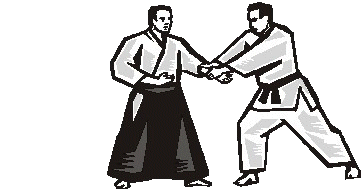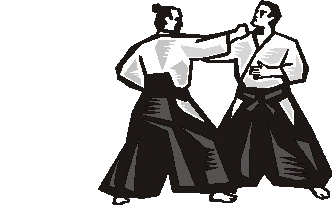When starting the study of Aikibudo, the Aikibudoka first learns how to move around (taïsabaki), then to fall down (ukemi), to finally become aquainted with katas that will allow him to perform series of simple gestures ending up in back rollfalls and later in front rollfalls. He/she will have to quickly memorise the Japanese terms used in the Dojo.

There are three fundamental principles that can be used to have someone fall:
Principle 1 :
The most widespread of these principles consists in executing a joint lock on your partner, leaving him/her with only one solution to escape the pain: performing a rollfall.
Principle 2 :
It is less common and more difficult for a beginner. It consists in initiating a desequilibrium and pressing it until throwing your partner off balance. This desequilibrium can be reache by interpositioning your own body (like a movement of the leg in judo) or by a simple movement pushing forward or backward with an arm or a shoulder.
Principle 3 :
It is restricted to expreienced Aikidoka and is a particular form of the second principle. It consists in sacrificing one's own balance to throw the partner off balance. This movement is called Sutemi (literaly "to throwaway the body").


Aïkibudo is an extremely efficient Martial Art. It has to be practiced without indulgence nor brutality. The Japanese term BU does not mean "War", as is too often heard, but "Force that allows peace ".







